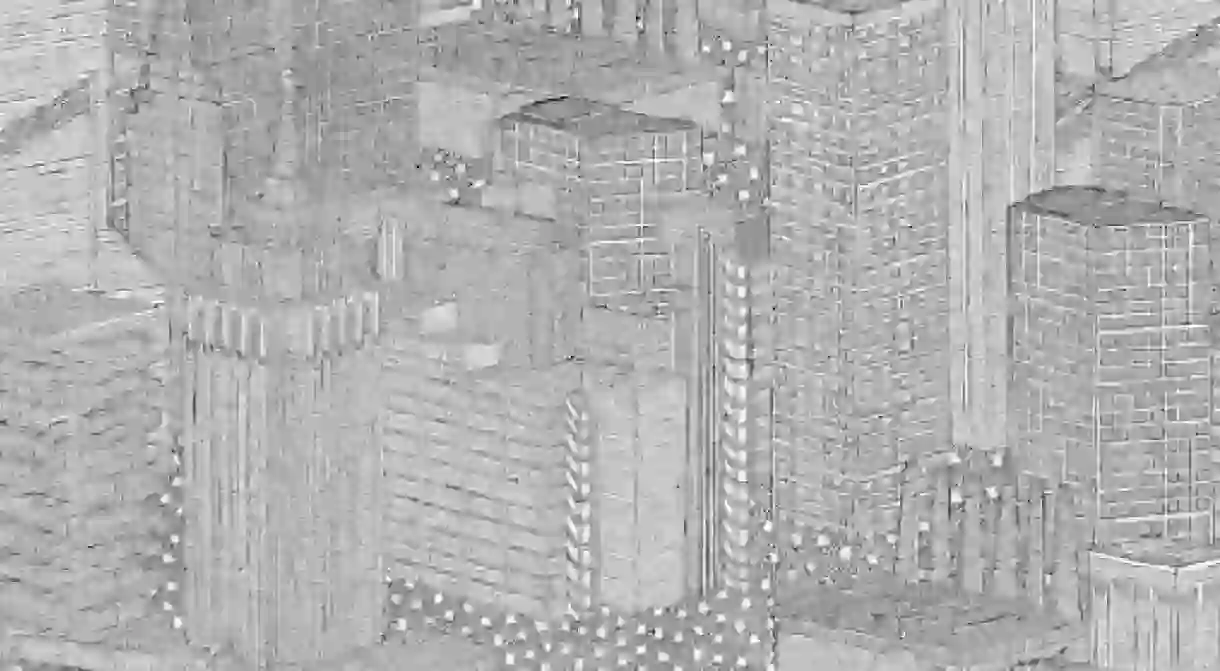J Powers Bowman: Interview With An Intricate Artist

By drawing freehand illustrations of buildings, trees and other landmarks, and assembling these into collages, American artist J Powers Bowman has been creating fascinatingly detailed landscapes. Here, Bowman speaks to The Culture Trip about his creative process and the thoughts behind his work.

Could you tell me about your background? When did you first become interested in drawing?
I was born and raised in Austin, Texas but moved to Eagle Rock, California when I was 18. I have been drawing to some extent for as long as I can remember, although I never took any formal arts training. I was 21 when I started to make a regular practice out of it.
Have you always been interested in drawing? Have you tried other mediums?
I have always gravitated towards pen-and-ink work over other mediums, probably due to the amount of time I spent doodling in my school notebooks growing up. I have tried a few other mediums over the years, such as sculpture, collage, and digital art. For the most part, I have focused on trying to refine my skills within my primary medium.

When did you first start drawing these intricate landscapes and cityscapes, and what inspired you to do so?
I have been drawing these landscapes for about the last seven years. I was always particularly interested in architectural illustration and rendering, and it seemed like a natural progression to combine those drawings to make cityscapes.
How would you describe your work?
My work consists of collages made from individual freehand illustrations, each piece incorporating between 20 and 300 such drawings. I assemble the collages both by hand and digitally. In the former case, I photocopy each drawing onto archival paper, cut them out in as much detail as possible, arrange them according to scale and perspective, and paste them together. My digitally assembled work is usually a standard 17 inches x 11 inches in size; my manually assembled work ranges in size from 4 inches x 6 inches up to 43 inches x 61 inches.

Could you explain in more detail about your creative process and how you manage to draw with such detail? Does the process ever frustrate you?
There are certainly times when one step or another of the creative process gets frustrating, but overall, I find my work very cathartic. As with any large project, the process becomes more manageable when you break it down into small steps. The detail results from years of repetition, with the goal of fitting the greatest possible amount of detail into the smallest possible space.
What do you aim to achieve with your work? How do you want viewers to respond to it?
I’m not trying to convey any specific message or theme per se. I would like to provide viewers with an intricate, detailed setting to explore when they look at my work. My hope is that there is enough minutiae that someone would be able to keep finding new, interesting things with each repeat viewing.

Are your drawings inspired by buildings in the real world?
Some of the buildings that I draw exist in real life; others are my attempt to render a type of building or architectural style that I find interesting. Some buildings are based on actual structures but aren’t strictly accurate renderings.
I get much of my inspiration from buildings that I have seen either in person or in photos over the years. I am fascinated with architectural styles that I think are unfairly reviled by others (Brutalism, for example), and with uniquely purpose-built structures from history (the Maunsell Forts built during World War II, for example).
How have people responded to your work?
The response over the years has been overwhelmingly positive. I have been very fortunate to have participated in a number of gallery shows in Los Angeles and Austin and to have received the positive attention that I have from blogs, magazines, and other outlets.

What are you planning on doing next?
I hope to continue to refine my drawing process and to create more, larger format, and more detailed work for my portfolio. I hope people continue to like it!
See more of J Powers Bowman’s work on his Flickr page.













